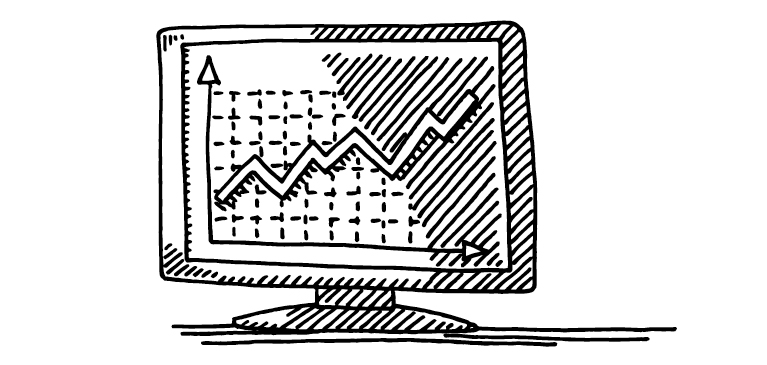
As we continue another harvest with low commodity prices, most producers are wondering where to look next to maximize their profitability. In most cases, the low-hanging fruit of expense cutting has been done. Finding those areas where additional gains can be realized requires more insight and evaluation of your business.
Using financial metrics to analyze the performance of your assets can help you determine where you can maximize profitability and minimize the amount of ineffective assets. The two commonly used metrics to determine the profitability of your assets are the Asset Turnover Ratio and the Operating Profit Margin Ratio. Understanding how these two metrics effect the profitability of your operation can help you uncover areas to minimize losses or increase gains. While computing these ratios on your entire operation can help you see the overall results of the metrics, to do a more thorough analysis, each segment of the business (crops, livestock, replacement animals, etc.) should be reviewed for its own impact on the entire operation.
The Asset Turnover Ratio shows how efficiently you are using your assets to generate revenues and is calculated by dividing annual gross revenues by total assets to show revenues as a percent of assets. Producers should target an Asset Turnover Ratio of at least 20 - 40 percent. A high turnover ratio percentage indicates you are getting more revenue out of your assets. Conversely, a lower turnover ratio percentage indicates the assets need to be more productive or they need to be downsized so that the capital investment in the asset can be redeployed to other areas with better turnover.
The Operating Profit Margin Ratio indicates what revenues make it to the bottom line and is calculated by dividing your net income after operating and depreciation expenses and owner withdrawals but before interest and income tax expenses by annual gross revenues. This is expressed to show your operating profit margin as a percentage of revenues. Producers should target an Operating Profit Margin Ratio of at least 10 – 20 percent. This ratio can help you see the effect that minimizing expenses has on the overall profitability of the operation.
Using these two metrics individually and in combination can help identify areas where the farm operates well and can be expanded and also areas that may be costing more than is realized in income. A Return on Assets is calculated by multiplying the Asset Turnover Ratio by the Operating Profit Margin Ratio. Producers should target a Return on Assets of at least 3 – 6 percent. A high Return on Assets can be achieved preferably by having a high Asset Turnover Ratio and a high Operating Profit Margin Ratio. However, having one ratio that is low but offset by the other that is high enough to generate an acceptable Return on Assets is another way to generate acceptable profitability.
Producers can evaluate the effectiveness of the capital being deployed to keep assets on the farm by using these metrics to take some of the emotion out of the decision making if the operation determines activities that have been done for a long time may need to be reevaluated and redirected. Identifying highly productive assets can help you look for ways to maximize an area where you are doing well. With this information you can improve or capture more profit on productive assets by pinpointing an area the farm can use to break away from relying solely on commodity markets of livestock, milk and crops.
Depending on the type of operation, areas that may have a low asset turnover ratio and low operating profit margin may involve machinery or equipment or buildings that sit idle or land or livestock that are not productive. For instance, if you need to improve your return on assets on machinery you may look at doing custom work or other services that utilize your assets and talents. If you operate a dairy farm, you may find that the best return comes from the milk cows and raising heifers has a low asset turnover. If so, you may consider moving your heifers off site to a heifer raiser and using the space for the milk cows.
We are seeing more producers taking a closer look at what they do really well on the farm and finding ways to create a niche for their operation that solves a problem for another operation. From selling organic crops, raising heifers or providing custom hauling services, producers need to look beyond just “tightening the belt” to find ways to maximize the assets and investments they have and gain financial stability.
Because these types of decisions can have a large impact on your operation, it is critical that careful financial analysis is done on each asset prior to making major decisions. Often times many on farm practices are done based on tradition or routine, rather than financial efficiency. The answer to the best asset to invest in will be different for each operation based on their own unique set of circumstances. Uncovering the next layer of profitability based on financial metrics may require the use of a consultant who has the expertise to calculate and evaluate the ratios and help you make decisions based on the outcomes of the analysis.
Link to full article here: https://issuu.com/greenstonefcs/docs/partners_winter_19_final/16


